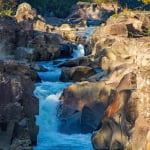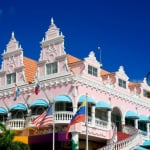Name: Kehi Jingu
Address: 11-68 Akebacho, Tsuruga City, Fukui Prefecture
Official Site: http://kehijingu.jp/
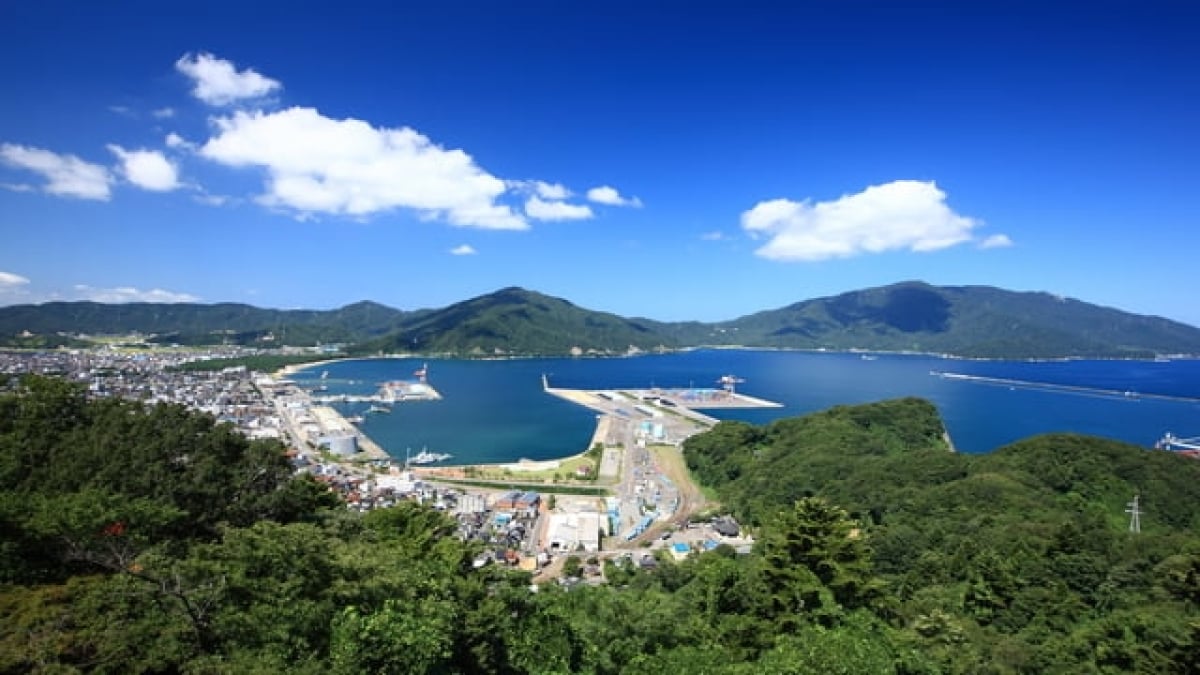
8 Must-See Tourist Spots in Tsuruga – Discover Breathtaking Beaches and Historic Landmarks
Here, we have carefully selected some of the best tourist spots in Tsuruga City, a vibrant urban center in Fukui Prefecture.
Tsuruga City, renowned for its scenic beauty, offers a variety of attractions. From the picturesque Kehi no Matsubara and Mizushima—known as the “Hawaii of the Hokuriku region”—to the Ramsar-designated Nakaikemi Wetland, and even the Tsuruga Museum of Humanitarian Aid which commemorates relief efforts, this city is packed with diverse attractions that offer countless ways to enjoy your visit.
Curious about what’s on offer? Check out the following spots.
table of contents
[x] close
8 Must-See Tourist Spots in Tsuruga – Discover Breathtaking Beaches and Historic Landmarks
- 1. Kehi Jingu (Kehi Shrine)
- 2. Kehi no Matsubara
- 3. Mizushima
- 4. Tsuruga Museum of Humanitarian Aid
- 5. Old Tsuruga Port Station (Tsuruga Railway Museum)
- 6. Tsuruga Red Brick Warehouse
- 7. Nihonkai Sakana Machi (Japan Sea Fish Market)
- 8. Nakaikemi Wetland – A Village Where People and Nature Interact
- ◎Summary
1. Kehi Jingu (Kehi Shrine)
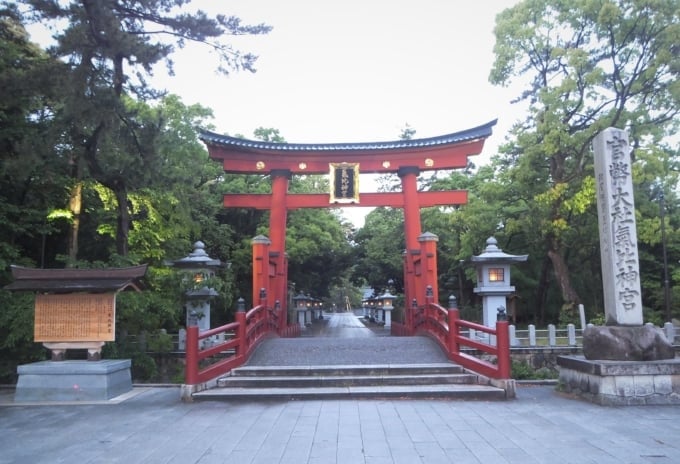
Kehi Jingu is one of Tsuruga’s most spiritually revered power spots. Famed for its miraculous effects, the shrine is said to have been visited by the poet Matsuo Basho during his journey on “Oku no Hosomichi.” Believed to have been established in 702, it was once also called the “Sōchinshu of Hokuriku-dō.”
The enormous torii is awe-inspiring, and it is considered one of Japan’s three great wooden torii, alongside those at Itsukushima Shrine and Kasuga Taisha. Once you pass through the torii, you’ll immediately be enveloped in a serene and calming atmosphere that makes you want to stay longer. It’s only about a 15-minute walk from JR Tsuruga Station, so be sure to add it to your Tsuruga itinerary.
2. Kehi no Matsubara
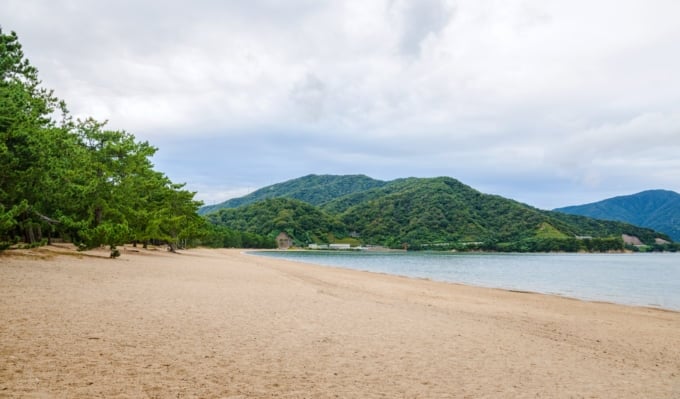
Designated as a National Scenic Site, Kehi no Matsubara is one of Tsuruga’s iconic landscapes. The shimmering Tsuruga Bay, white sandy beaches, and lush pine groves combine to create a quintessentially Japanese coastal scene. Especially in summer, the beach is bustling with bathers, while during other seasons you can enjoy the tranquil beauty in peace.
Along with Miho no Matsubara and Niji no Matsubara, it is counted among Japan’s three great pine groves. With convenient access by community bus or the Tsuruga sightseeing bus from JR Tsuruga Station, it’s an ideal spot to experience natural beauty.
Name: Kehi no Matsubara
Address: Matsushima-cho, Tsuruga City, Fukui Prefecture
Official Site: http://www.turuga.org/places/kehimatsubara/kehimatsubara.html
3. Mizushima
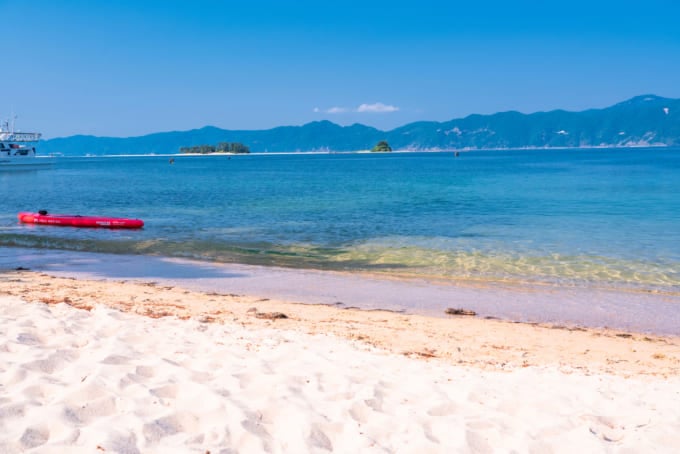
If you visit Tsuruga in the summer, Mizushima is a must-see. This small, uninhabited island in Tsuruga Bay is known as the “Hawaii of Hokuriku” because of its stunning beach. Ferries operate only seasonally, and you can reach the island in about 10 minutes from the Irogahama Pier.
With pristine, untouched white sand and crystal-clear water, it’s reminiscent of Hawaii! Although there are no shops or restaurants on the island, its untouched natural beauty is part of its charm. To get to Irogahama Pier, take the community bus (Tsunomi Line) from JR Tsuruga Station for about 30 minutes and then walk for about 3 minutes.
Name: Mizushima
Address: Irogahama, Tsuruga City, Fukui Prefecture
Official Site: http://www.turuga.org/places/mizushima/mizushima.html
4. Tsuruga Museum of Humanitarian Aid
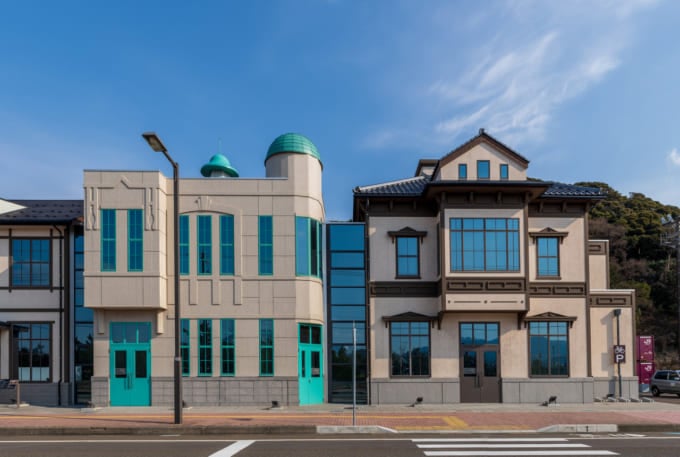
Tsuruga Port has long been a gateway to the continent. In 1920, Polish orphans who lost their families during the Russian Revolution, and later Jewish refugees fleeing Nazi persecution in 1940, arrived in Tsuruga—making it Japan’s only port with such a humanitarian legacy. Tsuruga Port is not just a commercial hub; it’s also a beacon of humanitarian aid.
At the “Tsuruga Museum of Humanitarian Aid,” you can see valuable materials related to the heroic efforts of Chiune Sugihara, who defied the Japanese government to save Jewish lives. Located about 10 minutes by sightseeing or community bus from JR Tsuruga Station, this museum invites you to reflect on peace while exploring Tsuruga.
Name: Tsuruga Museum of Humanitarian Aid
Address: 44-1 Kinigasaki-cho, Tsuruga City, Fukui Prefecture
Official Site: http://www.tmo-tsuruga.com/kk-museum/
5. Old Tsuruga Port Station (Tsuruga Railway Museum)
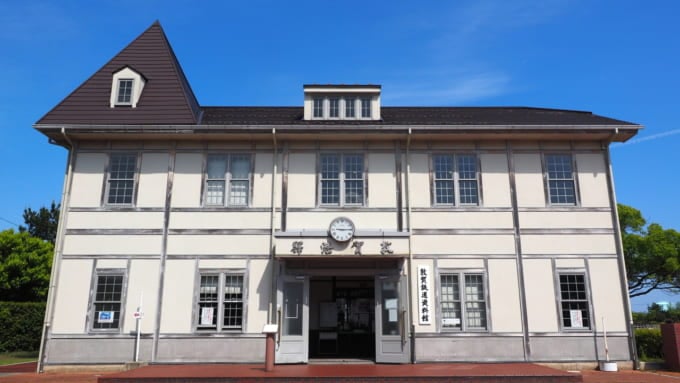
Once, the “Euro-Asia International Connecting Train” operated between Tokyo Shinbashi and Tsuruga Port starting in 1885. From Tsuruga Port, ferries sailed to Vladivostok, and from there, travelers connected to the Trans-Siberian Railway into Europe—truly making Tsuruga the gateway from the continent to Japan.
The Old Tsuruga Port Station (now the Tsuruga Railway Museum) preserves a glimpse of that bygone era. Revived in 1999 during the “Tsuruga Kirameki Minato Expo ’21,” this museum displays railway memorabilia and train models, providing a valuable insight into Tsuruga’s rail history. It’s conveniently located about 10 minutes by sightseeing or community bus from JR Tsuruga Station.
Name: Old Tsuruga Port Station (Tsuruga Railway Museum)
Address: 1-25 Minato-cho, Tsuruga City, Fukui Prefecture
Official Site: http://www.turuga.org/places/minatoeki/minatoeki.html
6. Tsuruga Red Brick Warehouse
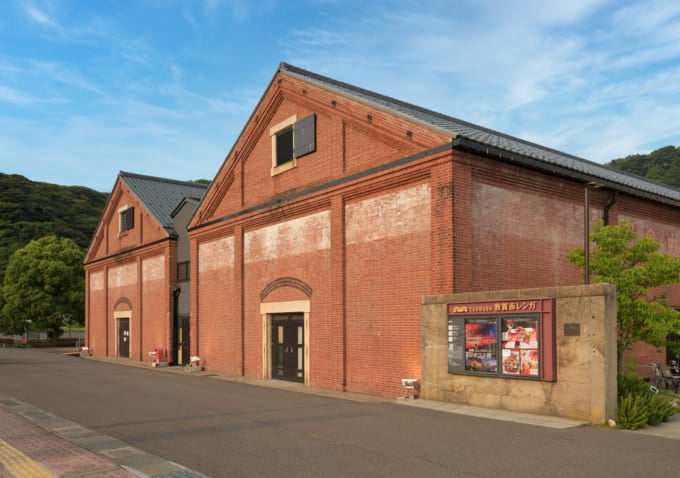
On the eastern side of Tsuruga Port stand two red brick warehouses, known as the “Tsuruga Red Brick Warehouse.” Built in 1905 to serve as an oil storage facility, these historical buildings were designed by foreign engineers and are now registered as Important Tangible Cultural Properties.
Recent renovations have transformed the north building into the “Diorama Hall,” where you can enjoy a realistic diorama of Tsuruga’s rail and port history, while the south building now houses the “Restaurant Hall,” offering meals in a charming red brick setting. This spot is perfect for shopping or dining during your Tsuruga tour. To reach it, take the sightseeing bus from JR Tsuruga Station to the Kanigasaki Green Space (about 8 minutes) and then walk for about 5 minutes.
Name: Tsuruga Red Brick Warehouse
Address: 4-1, Kinigasaki-cho, Tsuruga City, Fukui Prefecture
Official Site: http://tsuruga-akarenga.jp/
7. Nihonkai Sakana Machi (Japan Sea Fish Market)
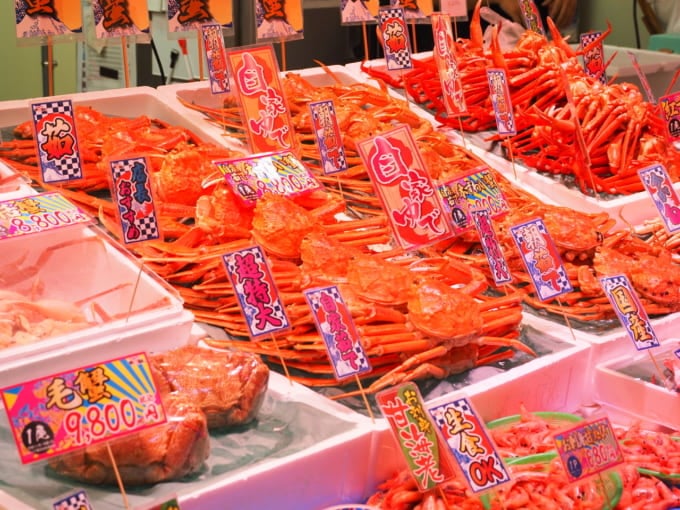
Tsuruga takes pride in its Nihonkai Sakana Machi, one of the largest seafood markets on the Japan Sea coast. With about 70 shops, including fresh fish stores, specialty product vendors, and eateries, this bustling seafood market is a visual feast. Here, you can admire the fresh catches brought in from Tsuruga Port. Whether you’re a foodie or looking for unique souvenirs, this market is an excellent spot to enjoy local flavors.
With plenty of takeout options available, you can wander the lively market and savor its offerings at your own pace. It’s only about a 10-minute ride by sightseeing bus from JR Tsuruga Station.
Name: Nihonkai Sakana Machi (Japan Sea Fish Market)
Address: 1-1531 Wakabacho, Tsuruga City, Fukui Prefecture
Official Site: http://www.sakanamachi.info/
8. Nakaikemi Wetland – A Village Where People and Nature Interact
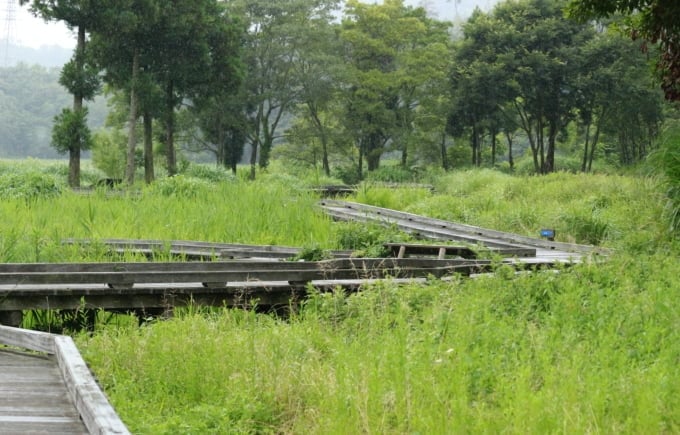
In Tsuruga, you’ll also find the Nakaikemi Wetland, a small Ramsar-designated wetland covering about 250,000 square meters. Despite its modest size, it is home to a rich array of life, including freshwater snails, medaka fish, grasshoppers, and frogs. Surrounded by three mountains, this basin-like wetland is formed by a unique landscape that is unusual even on a global scale.
A visitor center provides information and hosts special exhibits about the wetland, and there are also several traditional Tsuruga-style old houses, approximately 100 years old, that serve as additional attractions. It’s conveniently located about a 10-minute taxi ride from Tsuruga Station.
Name: Nakaikemi Wetland – A Village of Interaction Between People and Nature
Address: Okaborikiri, 79 Kashimaki, Tsuruga City, Fukui Prefecture
Official Site: https://goo.gl/aHoLbc
◎Summary
Tsuruga is a city that beautifully blends rich natural landscapes with a refined cultural atmosphere, owing to its historical role as Japan’s gateway to the continent. Whether you’re drawn to the stunning natural beauty of Mizushima and the Ramsar-designated Nakaikemi Wetland, the sophisticated cultural aura of Kehi Jingu, or the heartwarming humanitarian legacy at the Tsuruga Museum of Humanitarian Aid, there’s something here for everyone. After exploring the great outdoors, you can relax with a hot spring bath or indulge in the abundant seafood of Nihonkai Sakana Machi. Visit Tsuruga and discover your own favorite spot in this charming and multifaceted city.
RELATED ARTICLES
REGIONS
CATEGORIES
FEATURED ON Fukui
-
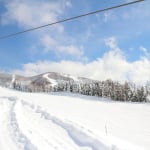
5 Recommended Must-See Spots When Touring Fukui in Winter
-
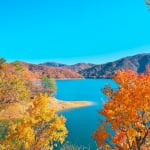
4 Recommended Tourist Spots in Kuzuryu – Enjoy Beautiful Natural Scenery and the Great Outdoors!
-
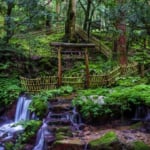
A town rich in nature and water! Introducing 8 sightseeing spots in Wakasa Town
-
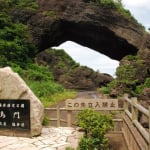
5 Recommended Spots in Echizen City – A Town That Developed as the Center of the Echizen Region
-
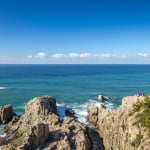
Admire the Spectacular View of the Sea of Japan at Tōjinbō! The Charm of the Popular Tourist Spot, Tōjinbō
MOST POPULAR ON Fukui
-
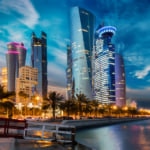 1
1Doha: Must-see Attractions in the Capital of Qatar
-
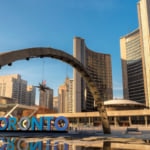 2
2Toronto: 10 Things to do in this Picturesque Canadian City
-
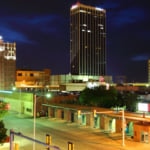 3
3Amarillo: A City Famous for It’s Amazing Canyons, Great History and Music
-
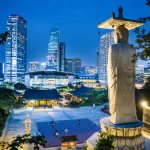 4
4South Korea: Dazzling Scenery, Rich Culture and Fascinating History
-
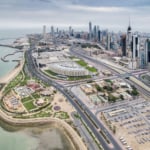 5
5Kuwait: A Country in Middle East Asia Famous for Hot Sand Dunes and Stunning Cityscape

